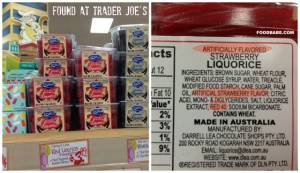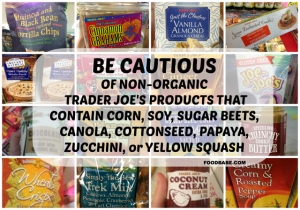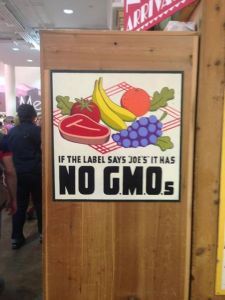 I’m reading The American Way of Eating by Tracie McMillan. It’s the story of her undercover investigations working at WalMart, Applebee’s, and in the farm fields of California. If you’re looking for a quick primer – that reads more like a novel than a textbook – on the crazily complex food system we’ve developed in our country, this is your book.
I’m reading The American Way of Eating by Tracie McMillan. It’s the story of her undercover investigations working at WalMart, Applebee’s, and in the farm fields of California. If you’re looking for a quick primer – that reads more like a novel than a textbook – on the crazily complex food system we’ve developed in our country, this is your book.
McMillan’s experiences in the farm fields were most eye-opening to me, as she reveals not only the sorts of things we can wrap our heads around (even if we don’t like the idea), like worker injuries going unreported, the brutal pace of picking, the punishing weather conditions, and the environmental juggling act a farmer goes through to grow food in a desert like California’s central valley. Sure, we wouldn’t want to deal with these things ourselves, but we might think well, people choose that job, they need the pay, and it’s how we get our food, so OK.
But it’s not so simple. Take, for one, the requirement that workers in California receive minimum wage. A big step forward for farmworkers, it was thought. What McMillan discovered, however, was that her pay was doled out by piece, not by hour, and then her hours were adjusted to reflect minimum wage. In other words, one day she worked eight hours picking twelve buckets of garlic – $19.20 by piece rate. So her check says she worked two hours, not eight, since minimum wage is a little over $8. She has the math skills and pays close enough attention to notice this – plus, she’s a legal and temporary worker, both of which give her security in quitting and/or writing about the problem. But this commonplace practice is so underpenalized when it rarely comes to light that it’s definitely worth the cheating company’s risk in doing it (see p. 96).
Whether or not their hours are properly reported, even at minimum wage, farmworkers (who have the hardest of the food supply’s chain of jobs) are grossly under-compensated for their labor, when one considers the profit margin of fresh produce. McMillan made the aforementioned $19.20 for picking twelve buckets of garlic, and this amount nets the farmer only about $153 (they’re not getting rich either). Through an incredibly complex series of negotiations between wholesalers, distributors, and retailers (which McMillan doesn’t even bother trying to explain in detail), that garlic reaches stores, in a sleeve that is just under a pound, and sells for $1.99 in smaller grocery stores, but up to $3.38 at WalMart (which does almost a quarter of this country’s grocery business).
So in the end, the amount of garlic for which McMillan did a full day’s backbreaking labor netted her $19.20 in pay; at the smaller grocery it will retail for about $600; at WalMart, those same twelve buckets cost the customer $1,014 (p. 82).
What is all that money paying for, exactly? Profits for WalMart, sure…but that’s just a portion of it. McMillan states, “most of the price tag at the store pays for the system that moves it from place to place…By the time an apple ends up in the supermarket, the entire cost of growing it accounts for just about 16 percent of the price, while the other 84 percent goes to the complex infrastructure that got it there, what industry experts call marketing.” (28)
Ah, yes – don’t you love thinking about 84% of your food dollar going to pay for marketing the food to you?
It’s not paying the wages of the worker who picked it, that’s for sure. But would paying a fair wage increase our cost so dramatically that we could no longer afford food? Hardly: “increasing farm wages by 40 percent would increase the average American’s family produce bill by about sixteen dollars a year” (29, emphasis mine). I think I can eat that cost, if it means a liveable wage for someone who’s working their butt off to pick my peaches.
She goes on to say, “if I were really stuck here working in the fields…I’d want to know why, if the cost of food is such a great concern, we don’t focus on figuring out how to make marketing cheaper. And I’d want to know why, if my wages don’t change retail price much, I couldn’t just get paid a better wage.”
Why, indeed?
Hopefully you are wondering about now how to combat this system – or at least, I hope, how to stop contributing to it?
- To start, buy as much produce as you can locally. Cutting out the cost of distribution systems and nation- or even world-wide transportation goes a long way towards keeping prices low. If the farmer’s market seems to expensive, go at closing time – you’ll get great deals on whatever’s left.
- If possible, join a CSA, which will ensure that your money goes straight into a farmer’s pocket (then get to know the farmer, and ensure he or she is paying a fair wage to fieldworkers).
- Avoid large farming corporations (even organic ones), as their infrastructure prohibits paying close attention to conditions in the field (most subcontract their labor anyway), and their corporate obligation to profit requires them to cut corners (sadly, it is often easiest to hurt people, rather than product).
- Avoid huge retailers like WalMart that make plenty of money off other goods but mark up the cost of fresh food (since it spoils and therefore cannot be bought in the huge quantities that are their advantage over smaller competitors). An orange may cost 50% more at WalMart than the local grocery store simply bc it doesn’t fit their pricing scheme (see McMillan, 136-7, for her comparison shopping between WalMart and the local Mexican grocery).
To keep it simple: buy fresh, buy local, buy in season, buy from small farms, and cut out as many middlemen as possible.

 towards third party verification of non-GMO status (from the Non GMO Project). Their Shredded Oats are already verified (along with 16 other products – I’ve seen the Non GMO Project seal on several lately), and they hope to have all cereals verified before the end of the year. So she’s vilifies them without bothering to check her facts…wonder how many others in her “bad” list were actually checked out?
towards third party verification of non-GMO status (from the Non GMO Project). Their Shredded Oats are already verified (along with 16 other products – I’ve seen the Non GMO Project seal on several lately), and they hope to have all cereals verified before the end of the year. So she’s vilifies them without bothering to check her facts…wonder how many others in her “bad” list were actually checked out?

